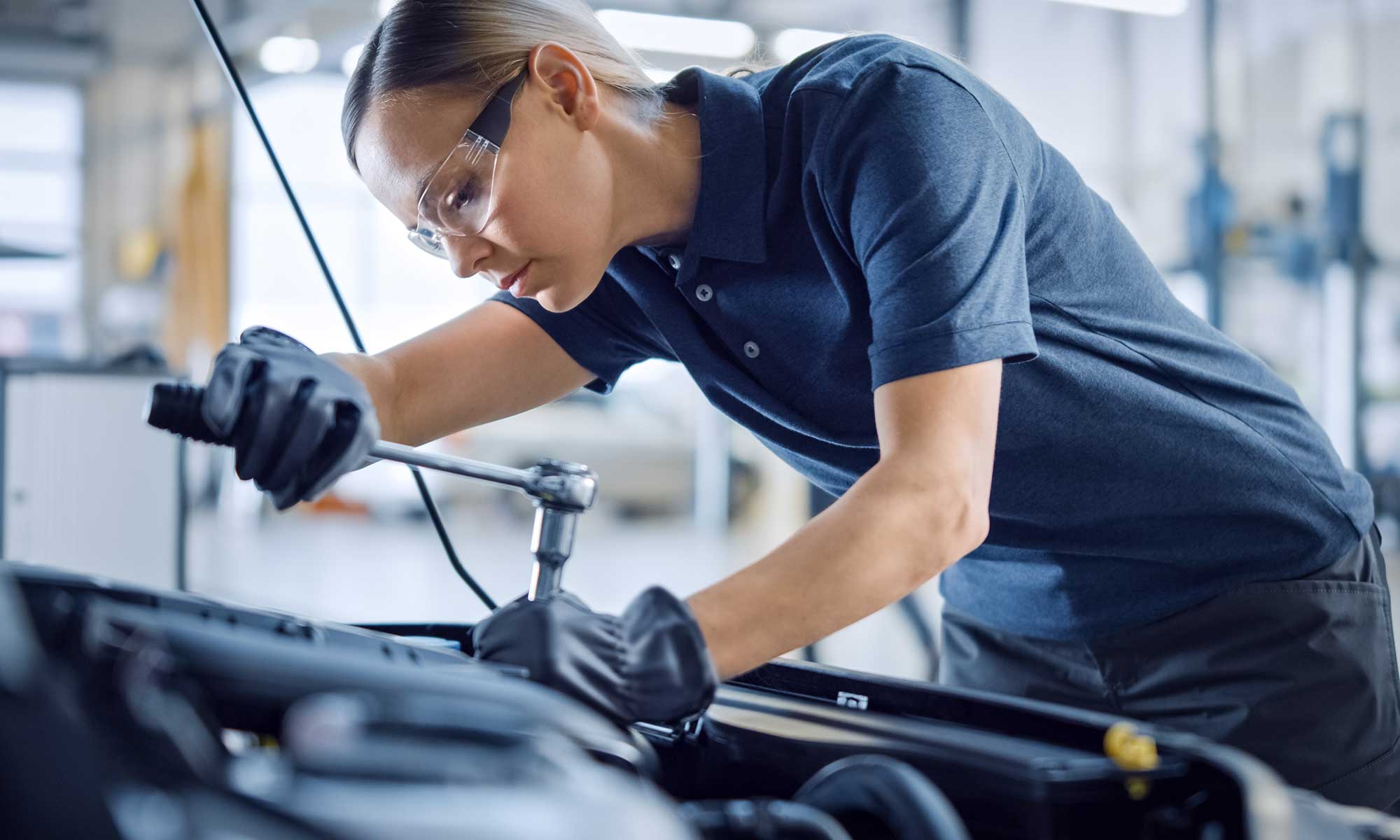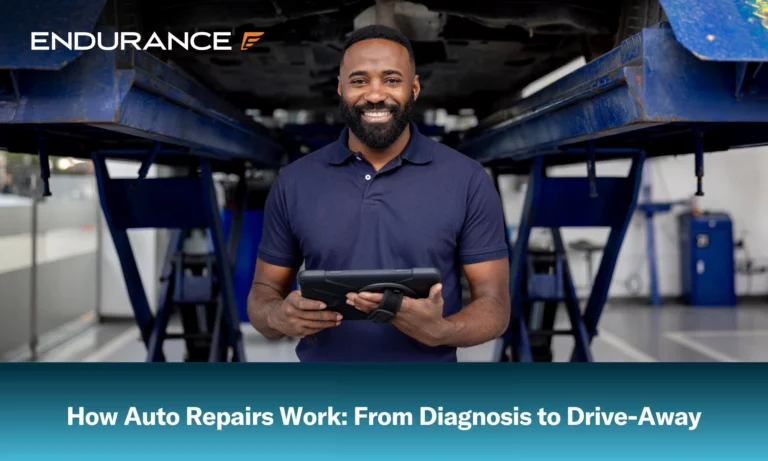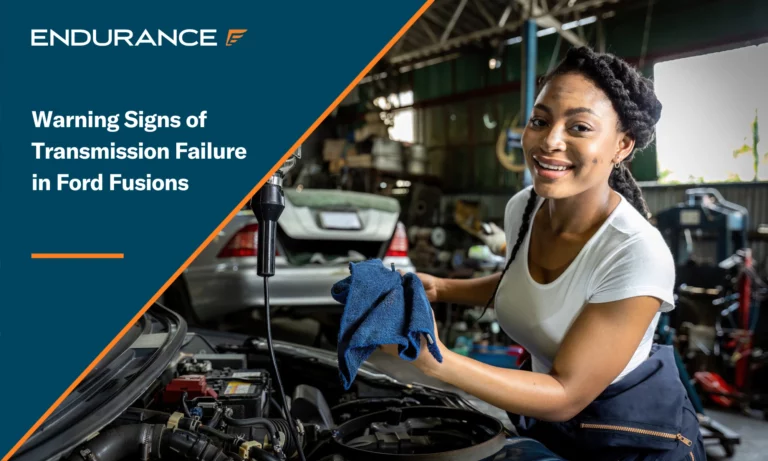A Woman’s Guide to Diagnosing Car Problems

While we’d like to think that equality has come a long way over the years, the reality is that there’s still a long way to go in the automotive industry. A recent Endurance SHE Survey conducted by the Women’s Choice Award revealed that over 60% of American women own their vehicle outright, but the exact percentage gave US auto repair mechanics less than 7 trustworthiness points out of 10.
When you’re unsure how to diagnose car problems, it’s normal to feel unprepared when visiting any repair shop. We want to ensure all drivers, especially women, know the basics of car care to feel confident in the face of a breakdown.
Nikki Ayers, an ASE-certified auto shop owner, shares her tips to diagnose vehicle problems, as well as what they could mean to help women like yourself ready to explain car trouble.
“You know your vehicle better than anyone else,” she says. “From every door ding to that weird high-pitch noise that happens for a second or two every so often. With these tips, you might be surprised at how much you know about your vehicle.”
How Can I Determine What’s Wrong with My Car?
To know what’s wrong with your vehicle, you must first understand how it acts when performing correctly. By keeping track of smells, noises, and the appearance of specific parts when working properly then you can quickly identify when something isn’t acting normal.
If you own an older model, then you may be tempted to invest in a new car, but with COVID slowing down manufacturing and used vehicles being marked up more than usual–your best bet is to take care of your vehicle by handling repairs right away while also investing in the proper breakdown protection.
You can also have ASE-certified technicians run an inspection on your vehicle when performing routine car maintenance to see if maybe they can find anything worth paying attention to.
Common Car Problems and What They Might Mean

To help you better take care of your vehicle, here are 7 of the most common car problems Nikki suggests looking out for. “Often, it’ll be clear when something isn’t working properly, but the quicker you get to it, the less likely it’ll completely shut down,” she adds.
1. The Engine Keeps Cutting Out
“If you’re in the middle of a road trip, the last thing you want is your engine completely shutting down. Most extended warranties include roadside assistance, but without it, you’re left stranded, which can be a lot to handle,” shares Nikki. If you’re concerned about your engine’s reliability, then there are a few steps you can take to see if you need to visit a local repair shop.
First, check your air filter to see if it’s clogged. See whether or not the air filter is white or a dark grey when looking. Dark grey indicates a clogged filter that needs replacing, as this can impact your engine’s performance.
It’s relatively easy to replace an air filter, so learning how to do it yourself is always good but this can also be done while getting an oil change. If the air filter is looking okay, your spark plugs could be at fault. Your engine could also be shutting down because the coolant temperature sensor isn’t working correctly. To check that, watch your temperature gauge as you drive to see if it’s working as it should.
Once you’ve determined something needs to be looked at by a professional mechanic, schedule an appointment to request an estimate and figure out the next steps.
2. The Car Won’t Turn On
You’re running late for work, clutching a coffee, you jump into your car to find out your vehicle won’t turn on.
If your car won’t turn on, your battery may be dead. “This could be because the part has failed, you accidentally left the headlights on all night, or you just need a new battery,” says Nikki. “Your vehicle could also not be starting because your alternator isn’t charging it properly.”
Carefully try jumpstarting your battery. If this doesn’t work, you’re going to need a new one, but have a mechanic test it first to be sure. If your car starts up again but loses power relatively soon after, chances are it’s your alternator that’s at fault.
Your alternator is responsible for powering your car’s electrical system and should always be looked at by an ASE-certified technician. This car problem is more to the point, but keep track of when it failed to start and also your driving habits—have you been driving the vehicle lately or parked outside for months? These are the questions that can help your mechanic understand where to look.
3. The Car Vibrates as You Drive
“While this isn’t always an outright emergency, the longer you leave it, the more potential damage it can do to your vehicle,” says Nikki.
Vibrations (especially at high speeds) are usually down to an issue with your wheels. A wheel may be unbalanced, deflated, or your steering/suspension may be failing. For anything other than a flat tire, you’ll have to take your vehicle to an auto shop to have it properly diagnosed and repaired. Unbalanced wheels can lead to accelerated tire wear, so it’s worth having them balanced as soon as you can.
If you suspect something is wrong with your tire, pull over immediately and check it isn’t flat. A slowly deflating tire can be fixed temporarily with a can of tire sealer, but a flat one will need to be replaced before you can hit the road again.
If you have a spare in your trunk and know what you’re doing, go ahead and swap them over. If not, you can call roadside assistance that’s provided with all Endurance protection plans to get towed to the nearest repair shop.
4. You Hear Scraping When You Hit the Brakes
“The brakes are undoubtedly one of the most important parts of any vehicle, so hearing unexpected noises coming is nothing short of worrying,” adds Nikki. “You may also notice that your brake pedal starts to vibrate when you apply pressure, which is just as important an issue.”
The sound of metal on metal when you apply your brakes is usually a sign that your brake pads have completely worn down. If your brake pedal vibrates, this could mean that your brake drum or rotors have warped.
Any brake issues need to be seen by a professional immediately. Not only is it unsafe to drive this way, but it can also lead to further damage to your brake system—and even more costly vehicle repairs.
You can learn how to check your brake pad thickness yourself to prevent letting it get to this point. Most can be seen through your wheel, and some even have an indicator to show you when they’re on their way out. With this knowledge in mind, you can also be sure a mechanic tells the truth when they say your pads need replacing.
5. The Car Isn’t Braking Properly
Noises are one thing, but your brakes not working correctly is even worse (and much scarier if you’re out on the road). If your car isn’t braking, pull over immediately and use your emergency brake to stop. If you’ve just noticed your brakes aren’t working as well as they used to, safely make your way to a professional.
There are a few reasons your brakes might not be working as you’d expect. Less responsive brakes are usually down to low brake fluid or worn brake pads. Ultimately unresponsive brakes could be due to a broken or cracked brake line.
Keep a bottle of brake fluid in your trunk and check your owner’s manual to see where you top it up. For a simple case of low brake fluid, you can pop the hood and do just that. However, it may still be worth having a professional take a look if there are any leaks.
For everything else, a visit to a trusted auto shop is 100% necessary.
6. The Car Makes a Loud Noise When Accelerating
Some people add exhausts as modifications—ones specially designed to produce the most extensive boom possible. But if you aren’t a Fast & Furious fanatic, loud noises from this area generally cause concern.
This is a relatively simple one: you have a hole in your exhaust, most likely due to corrosion.
There’s not much a person can do other than get their car checked out by a professional. As with other repairs, make sure to find out the going rate for this kind of job before you head to the auto shop for greater confidence.
7. The Dashboard is Lighting Up
It’s normal for dashboard lights to appear when you turn the ignition. But it isn’t normal for them to stay there.
There are lots of different lights, with several various reasons for flashing up. Your check engine light, for example, could appear because your fuel injection pump isn’t working or a dozen other things.
Pull out your owner’s manual and flick to the page on dashboard lights. Here you can find the light and what it could mean. By process of elimination, you can use any other symptoms your vehicle might be displayed to help you get to the bottom of what’s going on.
Of course, you’ll usually need an auto shop to fix the problem, but going in with an understanding of the problem puts you in a much better position.
8. The Air Conditioning is Blowing Hot Air
Temperatures are warming up, which means you’ll need your air conditioning system to be working properly to avoid overheating. If you find your vehicle blowing warm air when it should be cool, then there are a few parts to troubleshoot.
This could be due to a faulty A/C compressor or condenser, or maybe you just need to top off the coolant in your vehicle. Depending on what’s wrong impacts how easily it can be resolved.
An auto mechanic can help diagnose exactly what the issue is, but your A/C system is almost always the part that needs some troubleshooting.
Gain Peace of Mind Towards Car Repairs Today

Navigating the world of automobiles can be challenging for anyone, especially women. But with a solid extended warranty at your side, you can minimize maintenance and repair costs throughout owning your vehicle.
Endurance works with you to create breakdown protection that suits your specific needs. We’re proud to empower women across the nation to drive with confidence every day and proud that our work has earned us a 2021 Women’s Choice Award, with 9 out of 10 women recommending Endurance for breakdown protection.
Once you’re signed up, any repairs covered by your policy are taken care of by the ASE-certified mechanic of your choice, whether that’s an all-female auto repair shop or just your local independent. Just take your car over, show them proof of your membership, and we’ll take it from there.
Request a free, no-obligation quote online in minutes, or head over our Learning Center for more helpful information about warranties and car ownership in general.













Chris has been covering the automotive industry and topics ranging from road trips to driverless car technology for around 10 years. His own preference is for retro 4x4s that will stand up to a muddy field in the country.